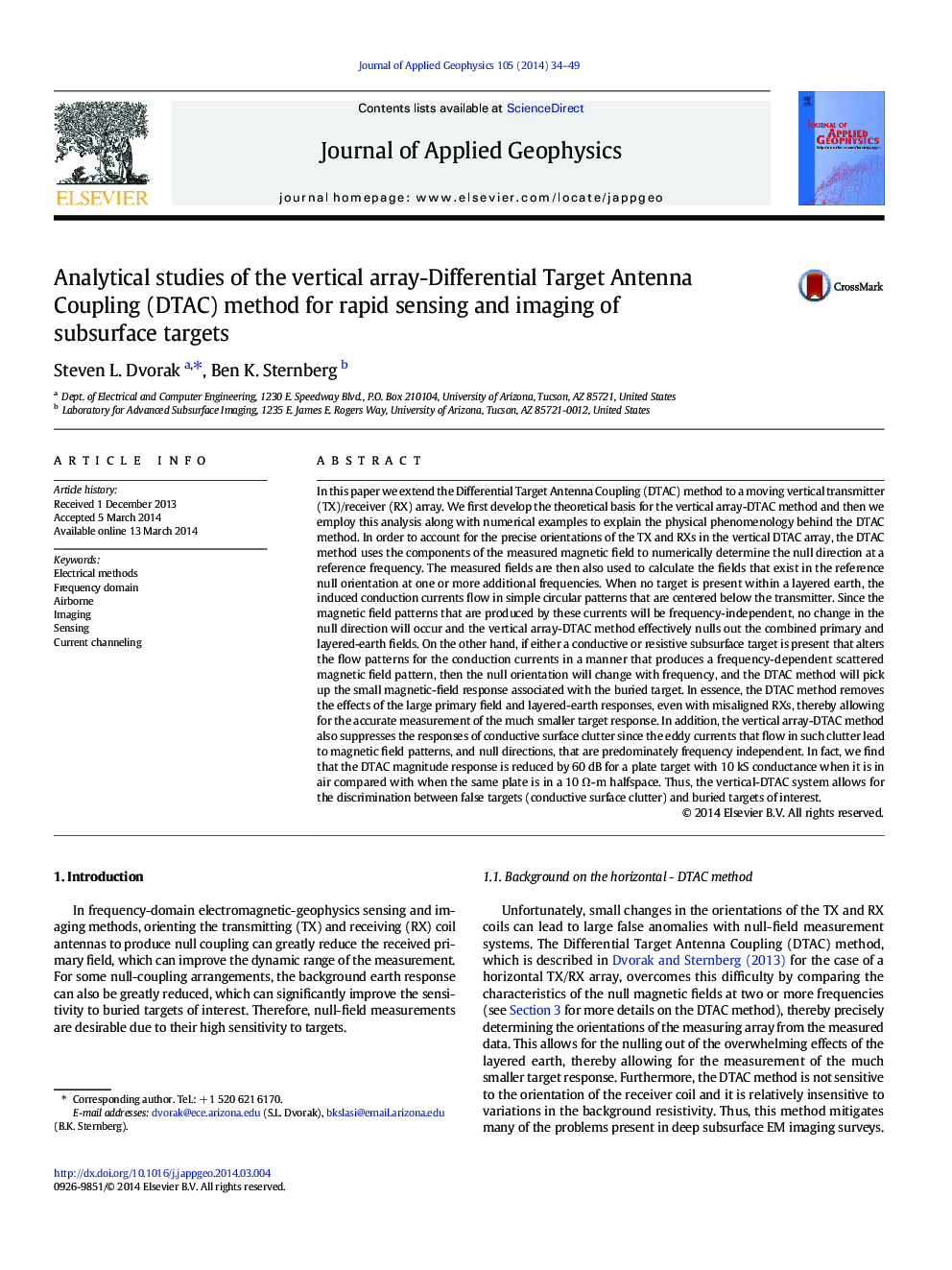| کد مقاله | کد نشریه | سال انتشار | مقاله انگلیسی | نسخه تمام متن |
|---|---|---|---|---|
| 4740153 | 1641146 | 2014 | 16 صفحه PDF | دانلود رایگان |

• We further develop the Differential Target Antenna Coupling (DTAC) method.
• We extend the method to a moving vertical array, i.e., the vertical-DTAC method.
• The vertical-DTAC method removes the primary and layered-earth responses.
• This allows for the measurement of the small responses for targets in the earth.
• The vertical-DTAC method discriminates between targets and surface clutter.
In this paper we extend the Differential Target Antenna Coupling (DTAC) method to a moving vertical transmitter (TX)/receiver (RX) array. We first develop the theoretical basis for the vertical array-DTAC method and then we employ this analysis along with numerical examples to explain the physical phenomenology behind the DTAC method. In order to account for the precise orientations of the TX and RXs in the vertical DTAC array, the DTAC method uses the components of the measured magnetic field to numerically determine the null direction at a reference frequency. The measured fields are then also used to calculate the fields that exist in the reference null orientation at one or more additional frequencies. When no target is present within a layered earth, the induced conduction currents flow in simple circular patterns that are centered below the transmitter. Since the magnetic field patterns that are produced by these currents will be frequency-independent, no change in the null direction will occur and the vertical array-DTAC method effectively nulls out the combined primary and layered-earth fields. On the other hand, if either a conductive or resistive subsurface target is present that alters the flow patterns for the conduction currents in a manner that produces a frequency-dependent scattered magnetic field pattern, then the null orientation will change with frequency, and the DTAC method will pick up the small magnetic-field response associated with the buried target. In essence, the DTAC method removes the effects of the large primary field and layered-earth responses, even with misaligned RXs, thereby allowing for the accurate measurement of the much smaller target response. In addition, the vertical array-DTAC method also suppresses the responses of conductive surface clutter since the eddy currents that flow in such clutter lead to magnetic field patterns, and null directions, that are predominately frequency independent. In fact, we find that the DTAC magnitude response is reduced by 60 dB for a plate target with 10 kS conductance when it is in air compared with when the same plate is in a 10 Ω-m halfspace. Thus, the vertical-DTAC system allows for the discrimination between false targets (conductive surface clutter) and buried targets of interest.
Journal: Journal of Applied Geophysics - Volume 105, June 2014, Pages 34–49